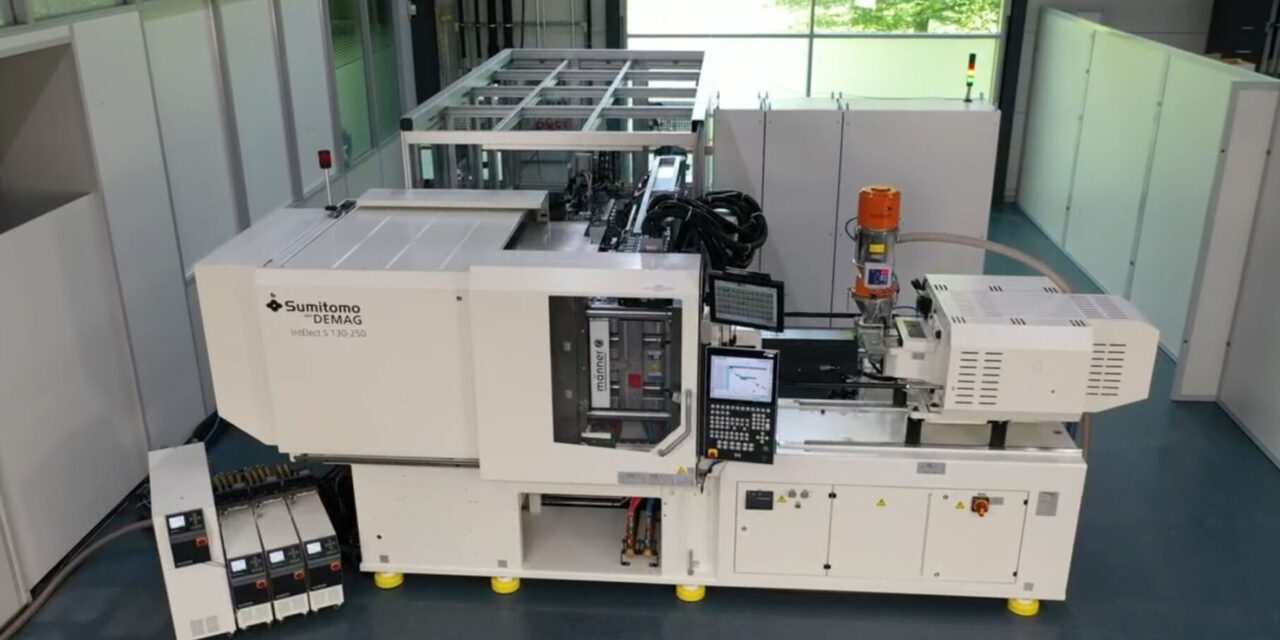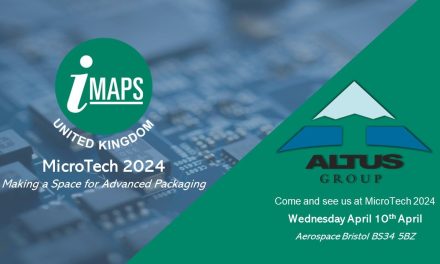By 2026 the global micro injection moulded plastic market is projected to reach USD 1,692 million, at a CAGR of 11.2% from 2021. This boost in demand is largely attributed to significant activities and developments in the medical, health care and wellbeing sectors.
Aside from the pandemic, much of this growth is being driven by advances in the home healthcare sector and an ageing population, which WHO predicts will double by 2050. UK medical specialist at Sumitomo (SHI) Demag, Sam Carr explores the opportunities this presents and how the company’s smaller tonnage IntElect machine is responding to evolving production requirements.
Manufacturing extremely small, high-precision thermoplastic components with micron tolerances is an art. In some instances, components can be as small as a single grain of granulate. The limit of what can be moulded can be as light as 0.0003g, with walls as thin as 0.0004in and dimensional tolerances to ±0.0005in.
Typical items being micro moulded using this technique can comprise a wide range of surgical, endoscopic, point of care testing, diabetes management, drug delivery and DNA research and sequencing devices. Additionally, the expanding market includes catheter components, hearing aids, dental prosthetics, microfluidics, vials, caps, specimen cups, vacuum blood and serum collection tubes, syringes, and IV parts. One thing these applications all have in common is their diminutive size and their need for total accuracy and zero defects during the moulding process.

Medical and healthcare components make up the largest ratio in the micro moulding market
In reality, the process of micro injection moulding isn’t vastly dissimilar to creating larger parts. Shot-to-shot precision is where the main difference lies. If more material is allowed under the check valve on a 10g part, it isn’t a huge issue. However, if the part weight is 0.1g, it becomes a major problem.
Historically, micro injection moulders would have invested in really specialist plunger systems or hydraulic machines. The latter meant dealing with variations in oil temperature and compressibility. Those drawbacks are removed from the equation with the new generation of all-electric machines. Offering an unprecedented wealth of control not previously attainable, the IntElect delivers maximum precision whilst offering full mould safety, ensuring the most sensitive cores and mould details aren’t damaged.
The Männer pipette exhibit which the Sumitomo (SHI) Demag medical team collaborated on last year is testament to the level of control that can now be accomplished with the latest generation of all-electric moulding machines. Equipped with its highly dynamic drive motors, the ready-to-go cleanroom IntElect S 130T moulding cell is one of the few compact all-electric machines on the market with the mould space to accommodate a 64-cavity cluster tool and demoulding robotics.
As well as the mid-size range, the IntElect thrives in the smaller tonnage, with the ability to supply screw sizes as small as 14mm on the 50T and 75T machines. This combination enables users to accomplish small shot weights but with the fine control that is required with micro moulded components. For increased production capacity, some moulders then opt for a larger screw and barrel to allow them to mould larger parts. Enabling them to mould larger components on the same machine demonstrates the flexibility the IntElect offers yet without compromising the precision to the application.
Meeting GMP requirements
Any airborne contaminants, such as dust and particles from the raw materials, as well as human contaminants like bacteria, could affect the function of a medical component. Although cleanrooms aren’t a requirement for all micro-moulded parts, medical components should be manufactured and packed in a self-contained cleanroom environment to meet ISO Class 7 or 8 standards and comply with any GMP and FDA regulations. With the IntElect, accompanying validation DQ, IQ and OQ documentation is automatically issued on installation.
A large number of medical machines will have a complex automated end of arm tooling systems to ensure parts are removed without damaging them. Often, vacuum extraction systems are integrated within the automation cell to remove micro medical device parts from the IM machine. Given that many can be smaller than a match head, a vacuum helps to prevent parts getting lost within the machine or falling to the floor. Additionally, these robotics prevent operators getting into direct contact with them, which could cause contamination.
Ionisation within the cell is another important consideration. “This is not just to keep the parts clean, but also to keep the static out to ensure parts don’t stick together. This makes the process easier for robots to handle and pack the components,” notes Sam.
Flexibility and design freedom
The smaller tonnage Medical IntElect units are now characterised by their unsurpassed freedom to accommodate a variety of tool configurations. Geared towards the mass-production of micro-medical components, Sam affirms: “The ability to install smaller 14mm screws with a large tie bar distance and mould space is a huge advantage for micro moulders. This level of control is made possible by our own highly dynamic direct drive technology and advanced toggle system. With acceleration of the injection speeds, the IntElect is able to fill up to as many as 96 micro cavities with precision, ensuring higher quality components are produced consistently.”
Energy efficiency and Total Cost of Ownership (TCO) are also greatly enhanced by the high-performance drives. Verified by extensive machine and part lifecycle durability tests, the clamp spindles were tested under the most extreme conditions and showed no evidence of visible wear – even after millions of cycles.
Increasing the capacity of the IntElect’s energy recovery system has not only improved energy efficiency but also extended the longevity of electrical components. Improved temperature control of the machine’s spindles, motors and inverters all help to guarantee safe operation of machine, even for the highest performing micro-moulding applications.

A smaller tonnage IntElect machine with its large tie bar and mould space improves injection and dosing precision for micro-moulders
As a result of the more consistent operating temperature, energy consumption is lower. An additional benefit is the reduction of heat that is required to be removed air-conditioned environments. Thus, helping to further lower operational costs and increase profit margins.
Furthermore, the introduction of strict user parameters ensures that explicit medical component quality assurance and validation standards are consistently adhered to. Sam explains: “The key areas that might impact a stable process include changes in pressure, temperature, flow rate and cooling rates. If these are altered in any way, it can trigger a costly re-validation exercise. By limiting the range on what an operator is authorised to adjust, validated micro medical injection moulding processes can be maintained.”
Predicting the future
In today’s globalised multi-site medical component production facilities, the ability to monitor and reconcile data from numerous machine sources is now imperative. Having access to this data via a single gateway can assist production managers to better manage inefficiencies, reduce costs, improve Total Cost of Ownership, troubleshoot and resolve equipment issues and minimise machine downtime.
Advanced batch tracking, contact-free inspection using cameras, and highly automated assembly are among the latest developments to meet the market’s precision and quality control requirements.
During the last 24 months, machine features such as remote diagnostics have been well adopted by customers as they strive to maintain operational efficiency and save money, while adhering to health and safety guidance and ensuring machine assets are safeguarded. Matching market advances, exciting new processing features and digitalisation projects are already filtering through the Sumitomo (SHI) Demag R&D pipeline.
Outlining several of the new features on the immediate horizon, Anatol Sattel, Business Development Director Medical explains: “We are currently developing an IoT dashboard. Our ultimate vision is an intelligent machine that can independently make predictions about part quality, machine wear and failures and perform optimisations online.”
Rapid development of various micro surgical, nanotechnology, micro-optics and microfluidics will inevitably increase demand for microinjection polymer moulding throughout Europe. As moulding companies continue to size up the opportunities, Sumitomo (SHI) Demag will continue to adapt its machinery line up to flex to growing demands.
Main image: The Männer pipette exhibit is testament to the level of control that can now be accomplished with the latest generation of all-electric moulding machines.




